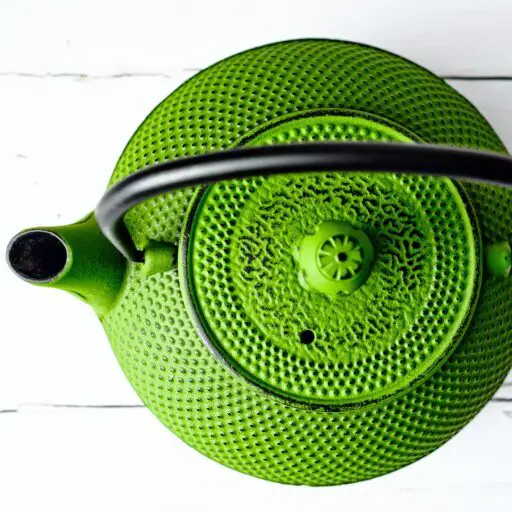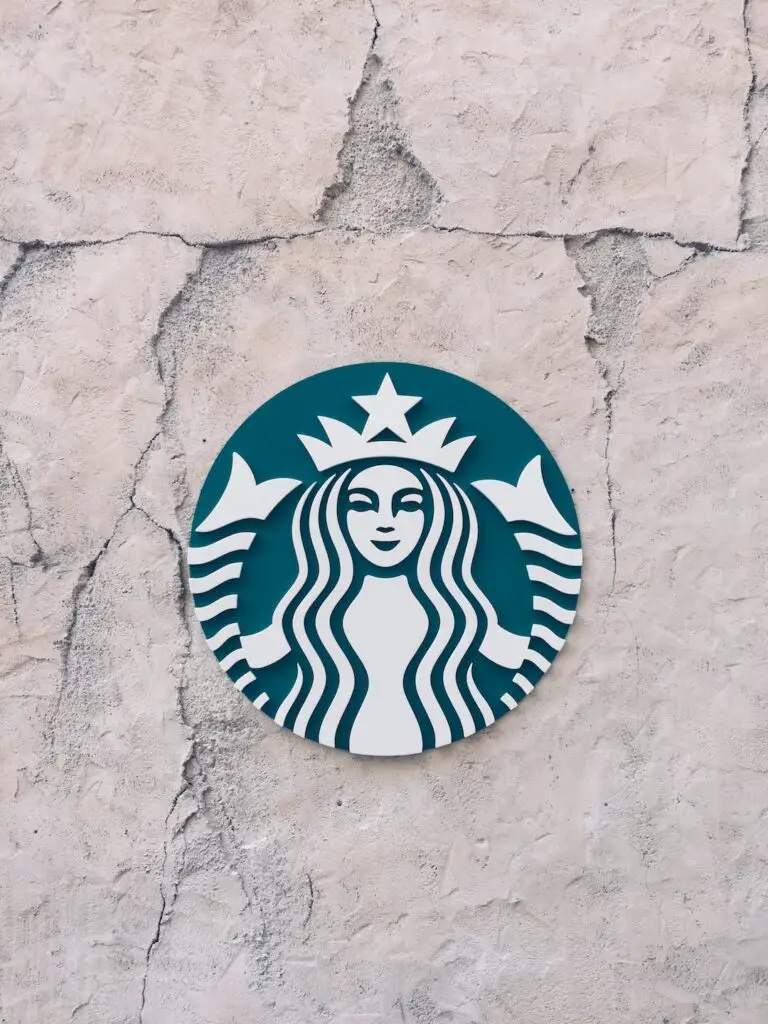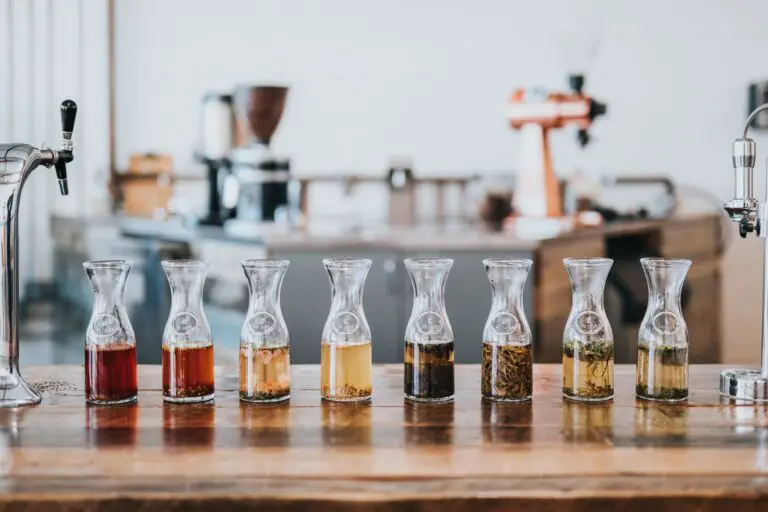Support our educational content for free when you purchase through links on our site. Learn more
Discover the 15 Most Expensive Tea Brands in the World! 🍵✨
Have you ever sipped a cup of tea and wondered what makes some teas worth their weight in gold? In this exploration of the 15 most expensive tea brands in the world, we’ll dive deep into the fascinating stories, unique flavors, and meticulous craftsmanship that elevate these brews to luxury status. From the legendary Da Hong Pao to the quirky Panda Dung Tea, each variety is steeped in history and rarity, making them a must-try for any true tea enthusiast.
Did you know that some of these teas can cost hundreds or even thousands of dollars per pound? 🤯 As we unravel the secrets behind their price tags, you’ll discover what sets these premium teas apart and whether they truly deliver an experience worth the investment. So, grab your favorite teacup and prepare to embark on a journey through the exquisite world of luxury teas!
Key Takeaways
- Rarity and Craftsmanship: The most expensive teas often come from limited production, requiring meticulous hand-picking and processing.
- Unique Flavor Profiles: Each tea offers a distinct taste experience, influenced by its terroir and cultivation methods.
- Cultural Significance: Many high-end teas are steeped in history, adding to their allure and value.
- Health Benefits: Premium teas are packed with antioxidants and other health-promoting compounds.
- Tea Pairing: Elevate your tea-drinking experience by pairing these luxurious brews with complementary foods.
Ready to indulge in the world of luxury teas? 👉 Shop premium tea brands and elevate your tea experience today! 🍃 Explore Luxury Teas
Table of Contents
- Quick Tips and Facts
- A Journey Through the World of Luxurious Teas
- The Currency of Tea: Why Price Matters
- The Most Expensive Teas on the Planet: A Countdown
- What Makes Tea So Expensive? The Factors Behind the Price Tag
- The Art of Tea Cultivation: How Quality is Harvested
- Tea Tasting: A Sensory Experience Like No Other
- The Health Benefits of High-End Teas: Are They Worth It?
- Tea Pairing: Elevate Your Experience with Food
- Collecting Rare Teas: A Hobby for the Discerning Palate
- Conclusion
- Recommended Links
- FAQ
- Reference Links
Quick Tips and Facts (#quick-tips-and-facts)
- Not all expensive teas are created equal. Just like wine, the world of tea has its share of hype and marketing. Don’t be fooled by extravagant claims – true luxury lies in the taste and experience. 🍵
- Storage matters. To preserve the delicate flavors of your premium teas, store them in airtight containers, away from light, heat, and moisture.
- Experiment with brewing. The perfect cup is a personal journey. Play with water temperature, steeping time, and even the type of water to unlock the full potential of your tea.
Want to explore the best tea brands in the world? We’ve got you covered!
A Journey Through the World of Luxurious Teas (#a-journey-through-the-world-of-luxurious-teas)
Have you ever wondered what makes a tea worth more than its weight in gold? 💰 It’s a fascinating world where history, rarity, and exquisite craftsmanship collide to create a truly luxurious experience. As tea connoisseurs at Tea Brands™, we’re here to guide you through this exclusive realm, unveiling the secrets behind the most expensive tea brands in the world.
From the misty mountains of China to the sun-drenched hills of India, join us as we delve into the stories behind these extraordinary teas. We’ll explore the factors that contribute to their hefty price tags, the intricate art of their cultivation, and the sensory delights they offer.
The Currency of Tea: Why Price Matters (#the-currency-of-tea-why-price-matters)
In the world of tea, price is often an indicator of quality, rarity, and craftsmanship. But it’s not just about bragging rights. The high cost of certain teas can be attributed to a multitude of factors:
- Limited Production: Many of the world’s most expensive teas come from small, specialized farms or even individual trees, resulting in extremely limited yields.
- Labor-Intensive Harvesting: Some teas require meticulous hand-picking, often at specific times of the year or even specific times of day, to capture the optimal flavor profile.
- Unique Terroir: Just like wine, the taste of tea is influenced by the soil, climate, and altitude of its growing region. Teas from specific regions, particularly those with ideal growing conditions, often command higher prices.
- Historical Significance: Teas with a rich history, especially those once reserved for royalty or used in ancient ceremonies, hold a special allure and value.
- Marketing and Exclusivity: Let’s be real, some of the price tag can be attributed to clever marketing and the desire for exclusivity. Limited-edition releases and teas with extravagant packaging can drive up prices.
The Most Expensive Teas on the Planet: A Countdown (#the-most-expensive-teas-on-the-planet-a-countdown)
Prepare to be amazed as we unveil the most expensive teas in the world, each with its own captivating story and unique characteristics:
-
Da Hong Pao (Big Red Robe): This legendary oolong tea from China’s Wuyi Mountains is shrouded in mystique and history. Legend has it that an emperor’s sick mother was healed by this tea, prompting him to drape his red robe over the four bushes it came from. Today, the original “mother trees” are carefully guarded, and their tea is considered a national treasure, fetching astronomical prices. “Each sip of Da Hong Pao is a journey through time, its complex flavour profile of earthy, woody, and sweet undertones serving as a liquid testament to its majestic history,” say the experts at Camellio’s.
-
Panda Dung Tea: Yes, you read that right! This tea is fertilized with panda dung, which is believed to impart unique flavors and nutrients to the tea plants. The high price tag is due to the limited availability of panda dung and the labor-intensive process of collecting and preparing it.
-
Yellow Gold Tea Buds: This luxurious tea from Singapore is a feast for the eyes as well as the palate. Harvested once a year using gold scissors, the tea leaves are then sprayed with edible 24-karat gold flakes.
-
Silver Tips Imperial Tea: This rare Darjeeling tea from India is prized for its delicate, silvery-white buds and exquisite flavor profile, often described as having notes of muscatel grapes and orchids.
-
Vintage Narcissus: This aged oolong tea from the Wuyi Mountains of China is known for its complex, evolving flavors that deepen and intensify over time, much like a fine wine. “Some of this tea can be aged for more than 50 years, which significantly enhances its flavor,” according to Camellio’s. “This aging process is similar to that of fine wines, making the tea richer and more complex over time.”
-
Gyokuro: This highly prized Japanese green tea, meaning “jade dew,” is grown under the shade of straw mats for several weeks before harvest. This process increases the chlorophyll content, resulting in a vibrant green color and a rich, umami flavor.
-
Pu-erh Tea: This fermented tea from China is known for its earthy, often pungent, flavor and its potential health benefits. Aged Pu-erh teas, some dating back decades or even centuries, can fetch exorbitant prices.
-
Tieguanyin Tea: This oolong tea from China’s Fujian province is named after the Buddhist deity Guanyin, the Iron Goddess of Mercy. It’s known for its complex floral aroma and a flavor profile that can range from sweet and fruity to roasted and nutty. “The quality of Tieguanyin tea is heavily influenced by the terroir of its origin, particularly the Anxi County in Fujian Province, China,” explains Camellio’s. “The unique climatic conditions and soil composition in this region contribute significantly to the tea’s distinct flavour.”
-
Gao Shan Tea: This Taiwanese tea, meaning “High Mountain Tea,” is grown at elevations of over 3,280 feet. The cool climate, high humidity, and misty conditions contribute to its delicate flavor and floral aroma.
-
Tienchi Flower Tea: This rare tea from China is made from the buds of the Panax notoginseng plant, which is prized for its medicinal properties in traditional Chinese medicine. It’s said to have a sweet, slightly bitter flavor and a ginseng-like aroma.
What Makes Tea So Expensive? The Factors Behind the Price Tag (#what-makes-tea-so-expensive-the-factors-behind-the-price-tag)
We’ve already touched upon some of the reasons why certain teas command such high prices, but let’s delve a bit deeper into the factors that contribute to their exclusivity:
-
Rarity and Limited Availability: The law of supply and demand plays a significant role. Teas produced in small quantities, often from specific regions or even individual trees, are naturally more expensive.
-
Labor-Intensive Cultivation and Processing: Many luxury teas require meticulous hand-picking, often at specific times of the year or even specific times of day, to capture the optimal flavor and aroma. The processing methods can also be incredibly labor-intensive, involving multiple steps of withering, rolling, oxidizing, and firing.
-
Unique Terroir and Growing Conditions: Just like wine, the taste of tea is influenced by the soil, climate, and altitude of its growing region. Teas from specific regions, particularly those with ideal growing conditions, such as high mountainsides with ample rainfall and misty conditions, often command higher prices.
-
Historical Significance and Cultural Value: Teas with a rich history, especially those once reserved for royalty or used in ancient ceremonies, hold a special allure and value. Their cultural significance and the stories they carry contribute to their desirability and price.
-
Marketing and Brand Prestige: Let’s be real, some of the price tag can be attributed to clever marketing and the desire for exclusivity. Limited-edition releases, teas with extravagant packaging, and teas associated with luxury brands can drive up prices.
The Art of Tea Cultivation: How Quality is Harvested (#the-art-of-tea-cultivation-how-quality-is-harvested)
The journey from tea plant to cup is a fascinating one, involving a delicate balance of art, science, and tradition. Here’s a glimpse into the meticulous process of cultivating high-quality tea:
-
Selecting the Right Cultivars: Just like grapes for wine, different tea cultivars (varieties) have unique flavor profiles and characteristics. Tea growers carefully select cultivars based on the desired flavor, aroma, and appearance of the final tea.
-
Creating the Ideal Growing Environment: Tea plants thrive in specific climates and soil conditions. Factors like temperature, rainfall, sunlight, altitude, and soil composition all play a crucial role in determining the quality and flavor of the tea.
-
Nurturing the Tea Plants: Tea plants require careful tending throughout the year, including pruning, fertilizing, and protecting them from pests and diseases. The health and vitality of the tea plants directly impact the quality of the tea leaves.
-
Harvesting at the Optimal Time: The timing of the harvest is crucial for capturing the desired flavor and aroma of the tea. Different tea types have different optimal harvesting times, often determined by the maturity of the leaves and the presence of specific compounds that contribute to flavor.
-
Processing with Precision: Once harvested, the tea leaves undergo a series of processing steps, including withering, rolling, oxidizing (for certain tea types), and drying. These steps are carefully controlled to develop the desired flavor, aroma, and appearance of the final tea.
Tea Tasting: A Sensory Experience Like No Other (#tea-tasting-a-sensory-experience-like-no-other)
Tasting tea is an art form, a sensory journey that engages sight, smell, taste, and even touch. Here’s how to elevate your tea-drinking experience to new heights:
-
Observe the Appearance: Before you even take a sip, take a moment to appreciate the appearance of the tea leaves and the brewed liquor. Note the color, shape, and size of the leaves, as well as the clarity and hue of the brewed tea.
-
Inhale the Aroma: Gently swirl the teacup and bring it to your nose, inhaling the aroma deeply. Try to identify different scents, such as floral, fruity, vegetal, nutty, or smoky notes.
-
Take a Sip and Savor: Take a small sip of tea and allow it to coat your palate, paying attention to the different flavors that emerge. Notice the sweetness, bitterness, astringency, and any lingering aftertaste.
-
Consider the Mouthfeel: Pay attention to the texture and weight of the tea in your mouth. Is it light and refreshing or full-bodied and velvety?
-
Reflect and Enjoy: Take a moment to reflect on the overall experience, considering the balance, complexity, and harmony of the tea. Most importantly, relax and enjoy the moment.
The Health Benefits of High-End Teas: Are They Worth It? (#the-health-benefits-of-high-end-teas-are-they-worth-it)
Tea, in general, has been celebrated for its potential health benefits for centuries. While more research is always being conducted, here are some of the potential benefits associated with tea consumption:
-
Antioxidant Powerhouse: Tea is rich in antioxidants, which help protect your cells from damage caused by free radicals, potentially reducing the risk of chronic diseases.
-
Heart Health Support: Some studies suggest that regular tea consumption may contribute to a healthy heart by reducing blood pressure, improving cholesterol levels, and promoting blood vessel function.
-
Brain Boosting Benefits: Tea contains caffeine and L-theanine, compounds that may enhance cognitive function, improve alertness, and boost mood.
-
Hydration and Wellness: Tea is a hydrating and refreshing beverage that can be enjoyed throughout the day, contributing to overall well-being.
While high-end teas may offer a more refined and luxurious experience, it’s important to note that the health benefits of tea are generally attributed to the tea plant itself, Camellia sinensis, rather than the price tag.
For more insights into the health benefits of tea, explore our dedicated category page.
Tea Pairing: Elevate Your Experience with Food (#tea-pairing-elevate-your-experience-with-food)
Just like wine, tea can be paired with food to create harmonious and delightful flavor combinations. Here are some general guidelines for tea pairing:
-
Match the Intensity: Pair delicate teas with light dishes and bolder teas with richer, more flavorful foods.
-
Consider Flavor Profiles: Think about the flavor profiles of both the tea and the food. For example, a floral tea might pair well with a fruit tart, while an earthy tea might complement a savory stew.
-
Experiment and Have Fun: Don’t be afraid to experiment and discover your own personal favorite pairings. There are no hard and fast rules, so have fun exploring different combinations.
Collecting Rare Teas: A Hobby for the Discerning Palate (#collecting-rare-teas-a-hobby-for-the-discerning-palate)
For true tea enthusiasts, collecting rare and aged teas can become a rewarding and enriching hobby. Here are some tips for starting your own tea collection:
-
Start Small and Focus Your Interests: You don’t need to break the bank to start a collection. Begin with a few teas that pique your interest and gradually expand your collection over time.
-
Research and Learn from Experts: Take the time to learn about different tea types, regions, and processing methods. Read books, articles, and tea brand guides to deepen your knowledge.
-
Store Your Teas Properly: Proper storage is crucial for preserving the quality and flavor of your teas. Store them in airtight containers, away from light, heat, and moisture.
-
Connect with Other Collectors: Join online forums, attend tea tastings, and connect with other collectors to share your passion and learn from their experiences.
Conclusion (#conclusion)
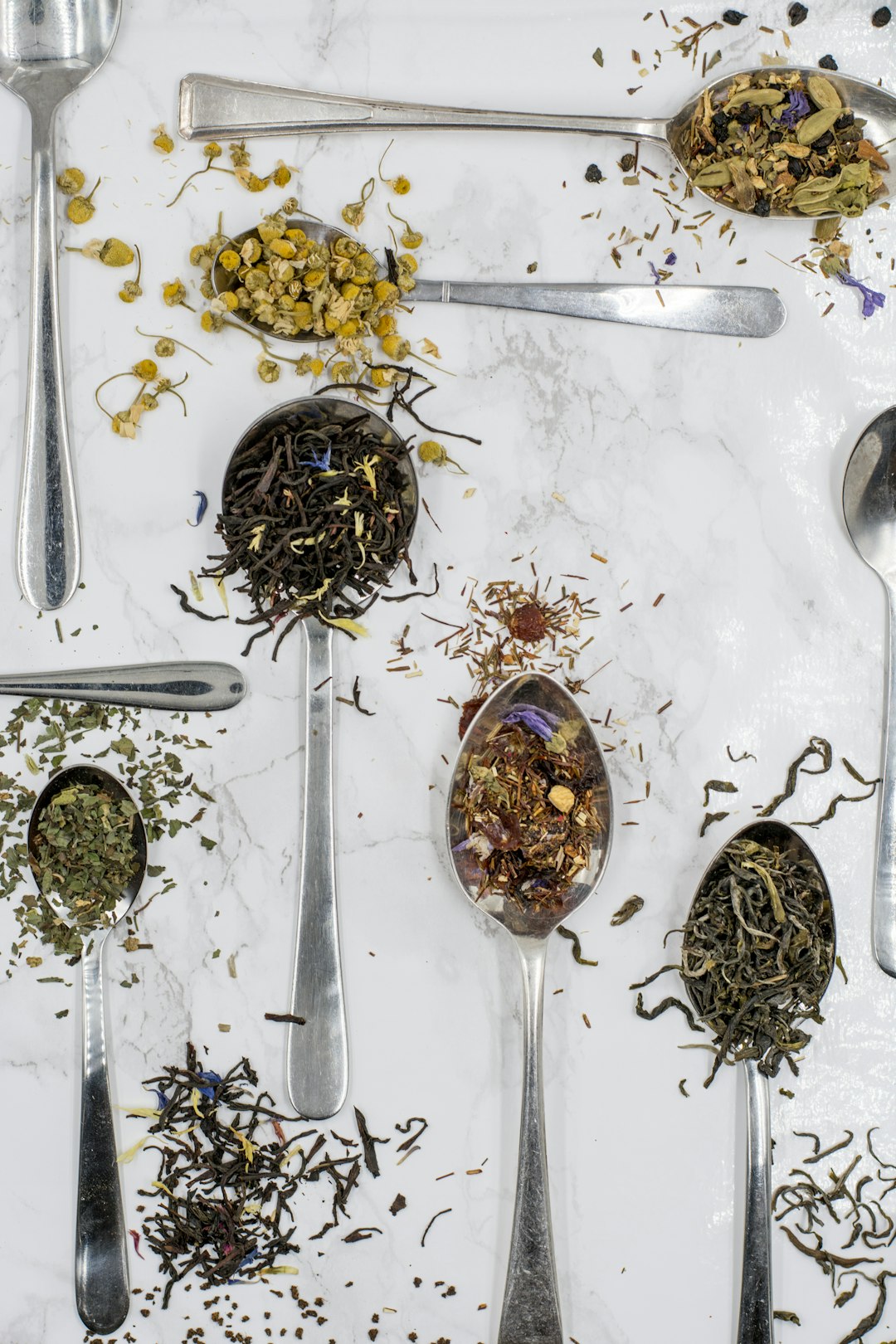
As we wrap up our exploration of the most expensive tea brands in the world, it’s clear that the realm of luxury teas is as rich and complex as the flavors they offer. From the legendary Da Hong Pao to the quirky Panda Dung Tea, each variety tells a story of tradition, rarity, and meticulous craftsmanship.
Positives and Negatives
Positives:
- Unique Flavor Profiles: Each of these teas offers a distinct taste experience that can be both delightful and enlightening.
- Cultural Significance: Many of these teas are steeped in history, providing a connection to ancient traditions and practices.
- Health Benefits: High-quality teas are often packed with antioxidants and other health-promoting compounds.
Negatives:
- Price: The steep cost can be a barrier for many tea lovers.
- Availability: Some of these teas are incredibly rare and may not be easily accessible.
- Taste Preference: Not everyone may appreciate the unique flavors that come with high-end teas, making them a niche market.
In conclusion, while these luxurious teas may come with a hefty price tag, they offer an unparalleled sensory experience that can be worth the investment for true tea enthusiasts. So, if you’re looking to elevate your tea game, consider indulging in one of these exquisite brews! 🍵✨
Recommended Links (#recommended-links)
- 👉 Shop Da Hong Pao on: Amazon | Tea Brands Official
- 👉 Shop Panda Dung Tea on: Amazon | Tea Brands Official
- 👉 Shop Yellow Gold Tea Buds on: Amazon | TWG Official
- 👉 Shop Silver Tips Imperial Tea on: Amazon | Darjeeling Official
- Explore Tea Culture Books: Tea: History, Terroirs, Varieties | The Tea Book
FAQ (#faq)
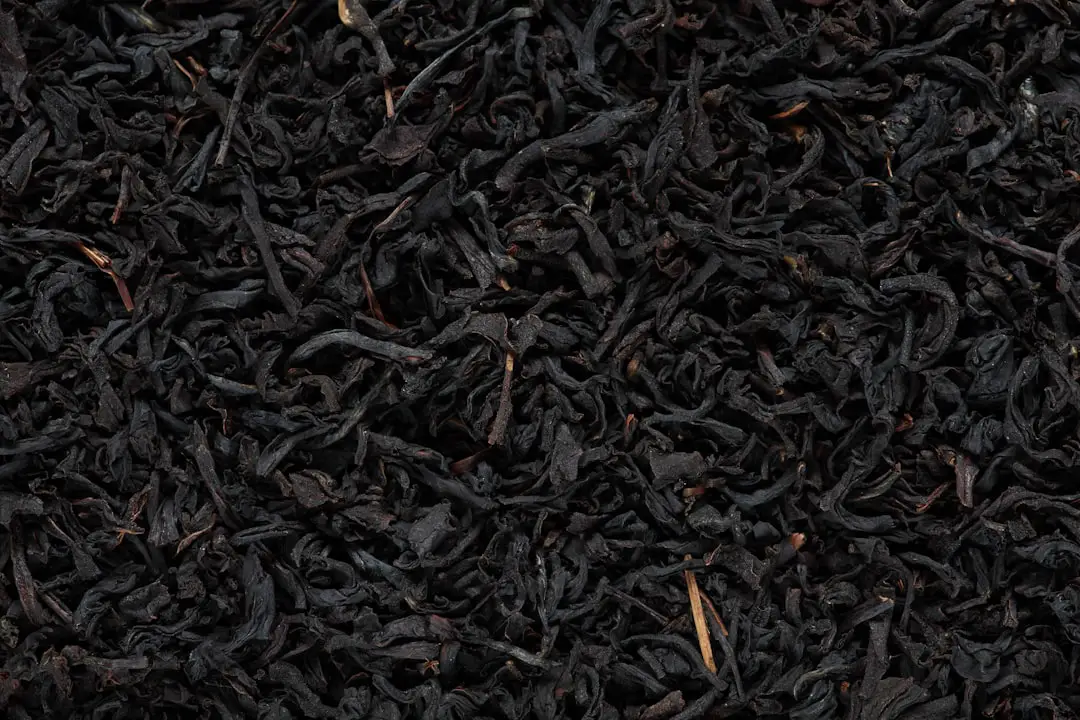
What makes a tea brand considered luxurious and high-end? (#what-makes-a-tea-brand-considered-luxurious-and-high-end)
High-end tea brands are often characterized by their limited production, unique flavor profiles, and meticulous cultivation and processing methods. They may come from specific regions known for their ideal growing conditions, and many have historical significance or cultural value. The rarity of the tea, combined with the expertise required to produce it, contributes to its luxurious status.
How do the prices of expensive tea brands compare to more affordable options? (#how-do-the-prices-of-expensive-tea-brands-compare-to-more-affordable-options)
Expensive teas can range from hundreds to thousands of dollars per pound, while more affordable options typically fall within the range of $10 to $50 per pound. While affordable teas can still offer great flavor and quality, the unique characteristics and rarity of high-end teas often justify their higher price tags. However, many affordable teas can provide a satisfying experience without breaking the bank.
What are the rarest and most exclusive tea varieties in the world? (#what-are-the-rarest-and-most-exclusive-tea-varieties-in-the-world)
Some of the rarest teas include Da Hong Pao, which is considered a national treasure in China, and Panda Dung Tea, which is produced in very limited quantities. Other exclusive varieties include Yellow Gold Tea Buds, known for their extravagant production methods, and Tieguanyin Tea, particularly the rarest grades from Fujian Province.
Are expensive tea brands worth the cost, or are there more affordable alternatives with similar quality? (#are-expensive-tea-brands-worth-the-cost-or-are-there-more-affordable-alternatives-with-similar-quality)
While expensive teas often offer unique flavors and experiences that can be worth the cost for enthusiasts, there are many affordable alternatives that provide excellent quality and taste. It ultimately depends on personal preference and how much you value the experience of drinking high-end tea. Exploring different brands and types can help you find the perfect balance between quality and price.
What are the health benefits of high-end teas compared to regular teas? (#what-are-the-health-benefits-of-high-end-teas-compared-to-regular-teas)
Both high-end and regular teas can offer health benefits, such as antioxidants and potential heart health support. However, high-end teas may contain higher concentrations of beneficial compounds due to their careful cultivation and processing. Additionally, the unique flavor profiles of high-end teas can enhance the overall tea-drinking experience, making it more enjoyable and satisfying.
